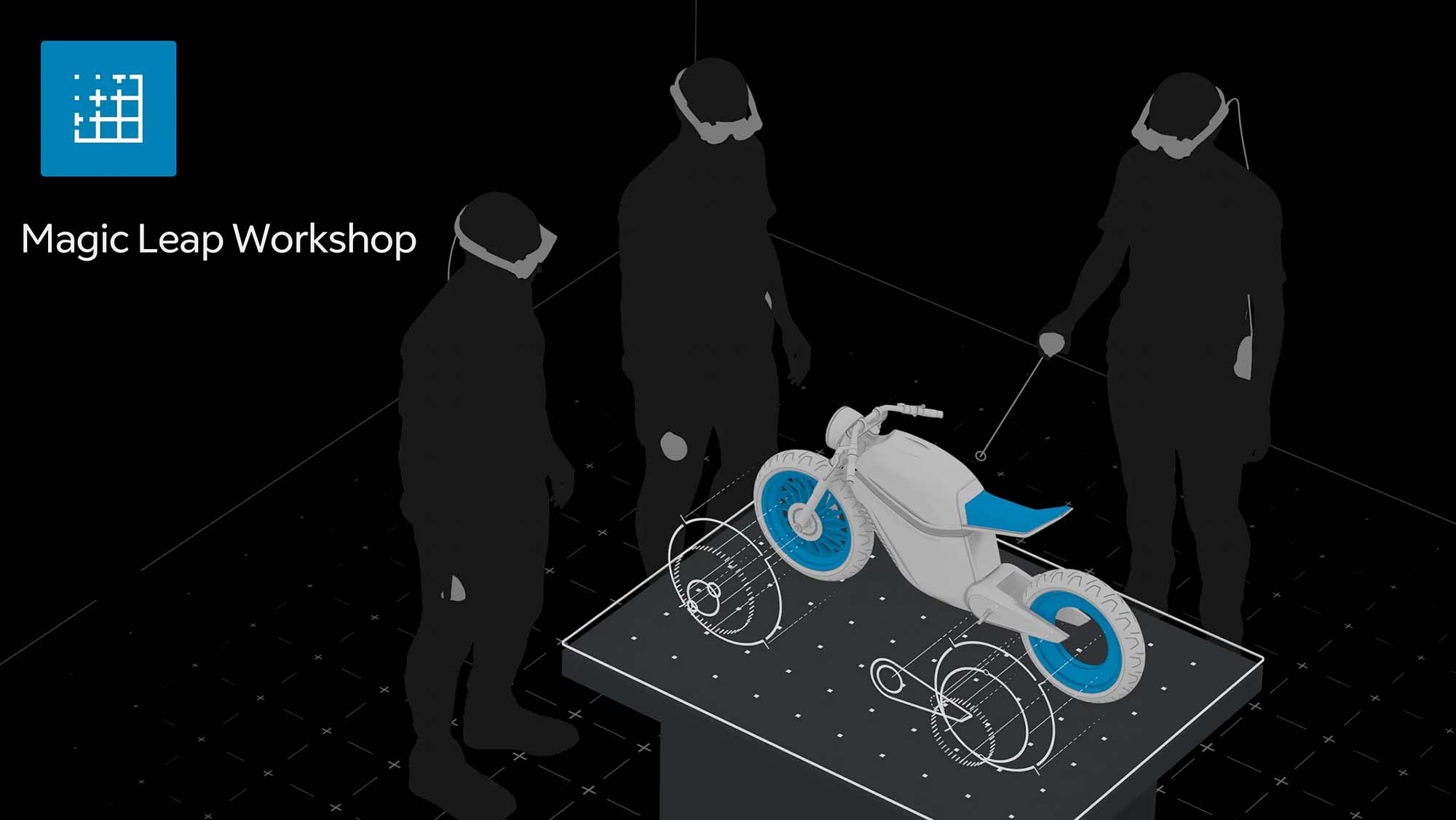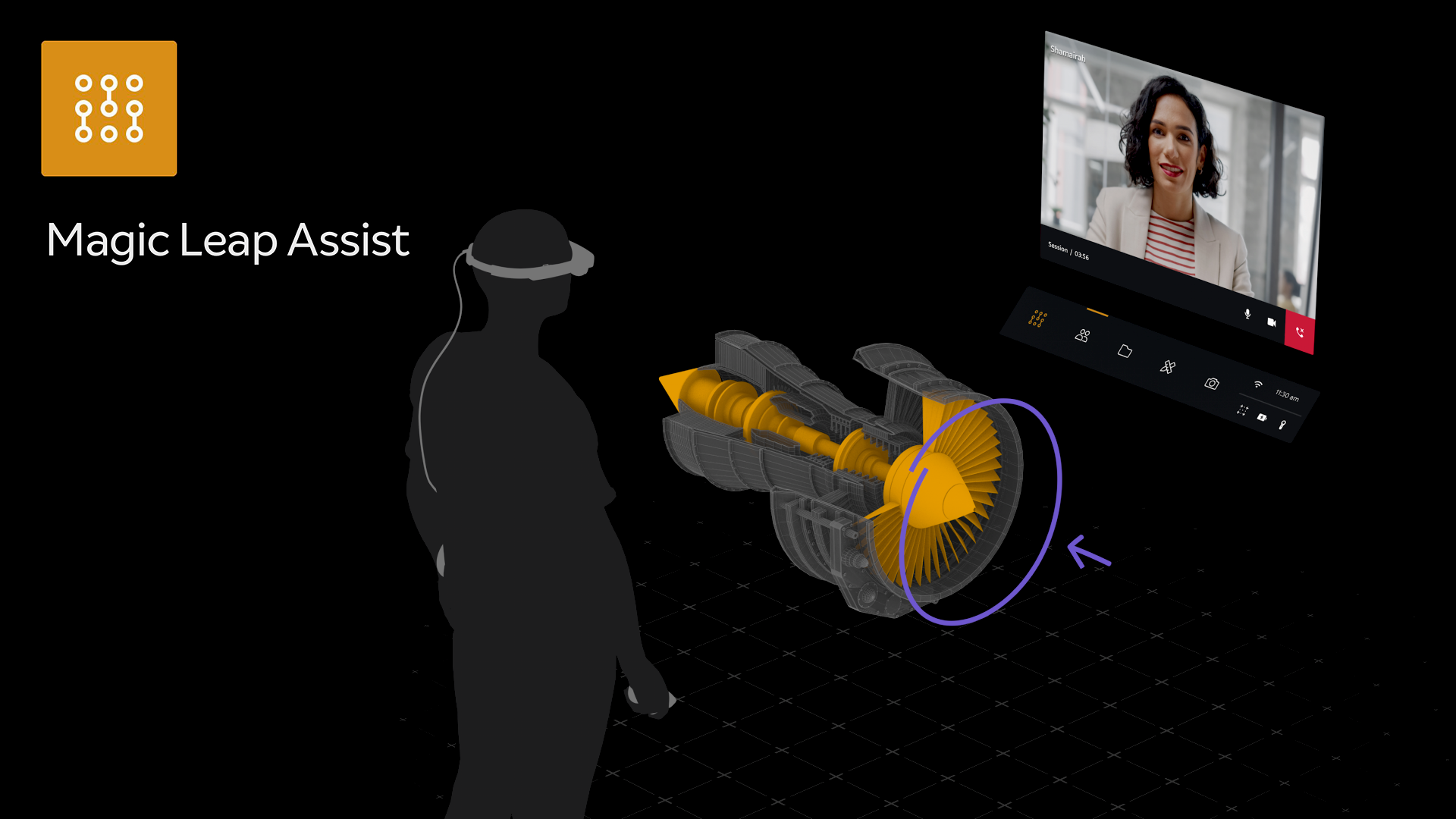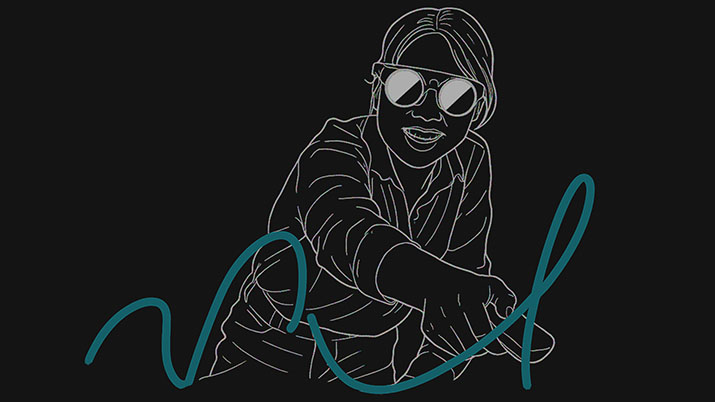Workshop and Assist
Staff Technical Artist
Magic Leap Inc | 2022–24 | Magic Leap Two Headset
Magic Leap internal applications enable collaboration and real-time guidance in AR.
At Magic Leap, I helped build the Workshop and Assist AR apps—tools that enable real-time collaboration through spatial computing, whether co-located or remote. My work included creating procedural 3D assets, developing shaders and VFX, and prototyping interactive features. I also built look-dev tools and optimized pipelines to support rapid iteration and scalability across teams.

Magic Leap Workshop Collaborative AR Tool and Hero Assets
At Magic Leap, I worked on Workshop, a spatial collaboration app that lets teams co-create and problem-solve in AR—whether together or remote. It supports importing 2D/3D files, annotating in shared space, and visualizing geospatial data through a live flight-data map. I developed a modular electric vehicle (EV) asset for collaborative sessions, enabling real-time part toggling and interaction. My work also included building shaders, VFX, and internal look-dev tools while optimizing pipelines to support scalable, performant AR experiences.
Vessel AR Experience for Interactive Learning
Each stage of the modeling process remained fully parametric, ensuring that form, scale, and curvature could be refined without losing detail or requiring a manual rebuild. Modifier layers controlled subdivision, beveling, and wall thickness, keeping the geometry clean and lightweight for real-time use. This structure allowed seamless iteration between design and production, maintaining precision while supporting future adjustments and optimization for the Magic Leap 2 environment.
Vessel Implementation in Unity
This video shows the vessel hero asset in action, captured directly from the Magic Leap 2 headset. The vessel was imported into Unity with preserved normals, UVs, and blendshapes, keeping scale consistent with the AR scene. Animation is script-driven rather than baked: a C# controller manages rotation and subtle deformations through blendshape weights evaluated on an AnimationCurve, providing precise timing control for the experience. This approach allowed fine-tuning of cues—start/stop, easing, and peak values—without rebaking, keeping engineering responsive to design updates while maintaining stable performance on Magic Leap 2.
Magic Leap Workshop Visualize the Future Experience Architecture in AR
Workshop is a multi-user tool that brings people together to get things done. It allows teams to collaboratively ideate, prototype and solve problems whether they are in the same physical location or participating remotely. Import 2D and 3D files into work sessions, or use annotation tools to co-create with others. Workshop also includes a live flight-data map mode that showcases Magic Leap 2’s ability to represent geospatial data.

Turbine AR Experience for Interactive Learning
For this stylized wildfire effect, I created a custom Shader Graph in Unity targeting Magic Leap. I used layered Voronoi and noise textures combined with time-driven UV distortion to mimic rising flames, while a fresnel effect emphasized the glow at the edges. All visual behavior was fully controllable through exposed properties, enabling real-time tuning and smooth integration in the immersive scene.
Portal Asset Transfer
The teleportation portal was built using swirling particles and motion trails. Designed with Unity’s VFX Graph, the portal blends sci-fi energy with real-time performance. The system supports immersive transitions during asset transfers, delivering both narrative weight and responsive clarity in spatial AR.
Remote Assistance Helps Enhance Workflows with AR
Assist lets Magic Leap 2 users share their real-world environment and digital content with remote participants. Experts joining via web browser can chat with and guide the user with tools like spatial annotations, file transfers, and more. AR-enabled remote assistance can increase efficiency and accuracy of complex tasks across any industry.


